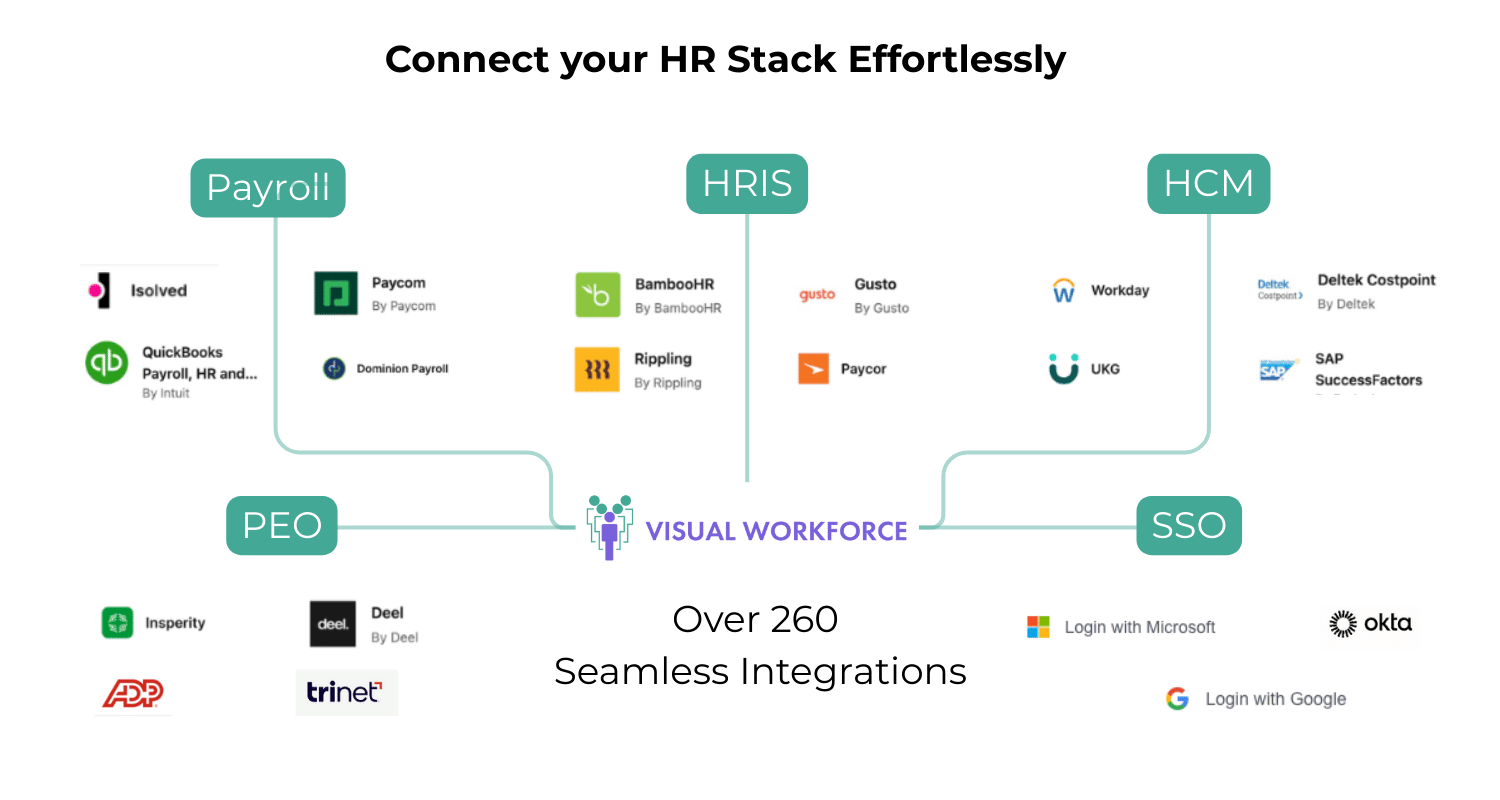6 Steps to Use Visual Data to Build Effective Employee Growth Plans
Focusing on employee growth is crucial to the success of any organization. While engagement is important, investment in hard and soft skills will return exponential benefits in productivity and performance.
There are also several indirect benefits to Skills Planning, like talent retention, internal mobility and upskillsing that contribute to your company’s competitive advantage and bottom line. The top reasons people leave their jobs: Needing more of a challenge, higher salary, Feeling uninspired, Wanting to feel valued, Seeking a better management relationship, and Searching for job growth and career advancement. Employees didn’t feel like their managers were challenging them enough, so they sought career growth elsewhere.
Bottom-Line: Employers must commit to employee growth if they want to continue to find success, especially in today’s competitive talent market.
Okay, got it. I need to focus on employee growth. Where do I start?
Focus on organizational Skills Planning starting with Employee Growth Plans
The best way to ensure true skills progression is to develop and execute measurable employee growth plans. Beyond improving skill sets, these individualized plans can help you standardize skill requirements, improve communication with employees, identify critical skill gaps, and create a standard process for tracking progress.
To be effective your growth plans should include:
Clear skill requirements
A clear evaluation of current skills
Actionable, measurable plan to reach desired proficiency
How do you ensure your development plans produce real growth for your employees?
We’ll walk you through the Visual Workforce process for developing employee growth plans that produce real results.
Our secret sauce? Visual Data for Internal Mobility.
1 | Identify Growth Goals
The motivation for professional growth comes from very different sources. Some employees may need to improve their skills to make them more efficient at their current job. Some employees are moving from a technical to a managerial position, driving needs for a different skill set. Some employees require complete retooling because they are changing departments or careers entirely.
Before creating your plans, you need to spend some time with your employees identifying their goals. Goals are unique to each individual and serve as the centerpiece of their growth plan. If the plan is misaligned with the employee’s goals, it won’t produce the desired results.
2 | Identify the Skills Related to the Employee’s Current or Desired Role
It’s best to use industry standards when identifying these skills and associated proficiency levels. In some cases, roles may be unique to your company. You can use internal documents, like a job description, or work with our experts to identify the skills and proficiency levels for your custom roles.
Once you’ve identified your goals and standard skills, it’s time to start building your plan by evaluating the employee’s current proficiency levels.
3 | Conduct An Evaluation
Develop and conduct a survey to determine your employees’ current proficiency level for each standard skill. When developing your survey, be sure to use a consistent scale and universal language across all surveys to avoid confusing discrepancies in the resulting data.
Both managers and employees should complete the survey. Multiple perspectives may reveal profound insights into differences between a manager and employee’s perception of acceptable proficiency. Shared transparency often helps strengthen communication and align expectations between managers and employees.
4 | Analyze Relative Skills Proficiency
Once your surveys are complete, it’s time to utilize the data to build an actionable plan. At this point, you will start leveraging data visualization. Use visualization techniques to help you analyze your survey data and clearly identify skill gaps. These visualizations need not be complex. Use them to clearly evaluate the proficiency of an employee's skill set relative to a standard proficiency measures for the position.
Do you need to have visualizations to identify skill gaps? No, but you’ll be wasting time manually comparing survey results and attempting to communicate vague action steps to your employees, especially if there are misaligned expectations. Data visualization provides quick, clear and credible insights for everyone, so you can spend your valuable time developing actionable next steps to help your employees improve their performance.
Your skills proficiency analysis compares employee’s current proficiency against the desired proficiency, like the graph below. Here’s what it should look like:
5 | Create An Action Plan
Once you’ve analyzed the current proficiency levels for each skill using visual data, it’s time to plan next steps. In your action plan, each skill that requires improvement should have its own definitive action step. Use the graphs from your proficiency analysis to identify and prioritize each action item. For example, a “yellow” skill can be improved quickly so your employee could start there. Or a “red” skill may need to be addressed immediately because it is critical to your employee’s ability to do their job.
The action plan should be as specific and measurable as possible, so employees know exactly what steps they must take to progress their skillset.
6 | Track Progress
Now your growth plan is activated and your employees are taking the necessary steps to improve their skill proficiencies. The work doesn’t stop. It’s important that you continue to track improvement throughout the development process and measure results to ensure positive progression.
Everything you’ve developed prior in this process will enable you to efficiently track employee progress as they execute their growth plans. The visualizations from your proficiency analysis can be used to easily compare progress towards the desired proficiency levels. Further, you can revise your action plan to reflect any changes so your employees have a current reference guide during their development.
Whether you have 10 employees or 10,000 employees, you can use this repeatable and scalable process to develop effective growth plans that produce real results for your employees. By investing in employee growth through Skills Planning, your workforce will become more productive, your teams will perform better, and you will retain your top talent. Taking steps to develop actionable and measurable employee growth plans will not only improve your workforce, but enhance your competitive advantage and bottom line.
Ready To Develop Your Employee Growth Plans?
Visual Workforce provides all the tools and visualizations you need to start building your employee growth plan today. Let us show you how.
About The Author
Cynthia Siewert, Product Management & Client Success
My focus is on product design and customer success. My personal philosophy is to build trust in every word and every action. I am passionate about helping our customers maximize value. Bringing transparency to the talent and skills that exist in your team, department, or company and aligning that to what you ultimately need to be successful, means happier employees because they have a clear path to improving their skills and more productive teams because they know that they have the right skills in place to get work done.
Ready to invest in the future of your workforce?
Learn how Visual Workforce can help you discover and optimize the skills and capabilities of your people, teams, and projects.











